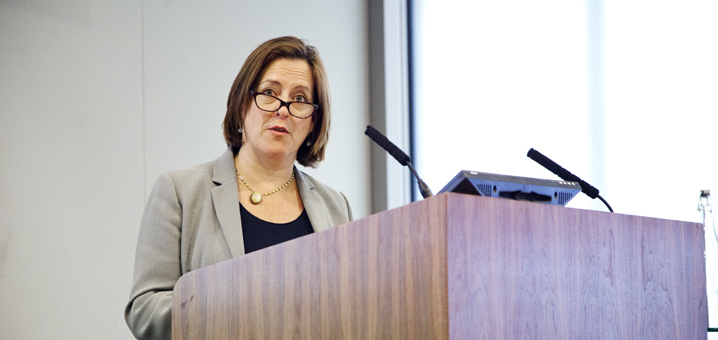
The government has been left red-faced – and potentially £15m out of pocket – by repeating an error which last year cost it £36m and prompted major reforms to its administration of local government finance.
Last year, the government issued a correction to its top-ups and tariffs formula, after it led to a number of business rate pilots receiving more grant than they were entitled to.
Last week, Ministry of Housing, Communities and Local Government permanent secretary Melanie Dawes wrote to the National Audit Office (NAO) admitting that the incorrect formula was used again this year after officials failed to update it.
In her letter to Sir Amyas Morse, comptroller and auditor general at the NAO, Dawes said: “We are looking into the precise circumstances of how this happened.
“However, it originated from a failure to correct the guidance following last year’s error, rather than a new mistake in our computations.”
The error, which exaggerates the forecast benefit of participating in a pilot, appeared in the formula used to calculate section 31 grant payments to business rates pilots in the ministry’s NNDR1 guidance note.
Dawes admitted some local authorities – especially those participating in a pilot for the first time this year – may have based some element of their budget planning on the incorrect formula.
She said: “Given that the financial year has already started, and particularly since the error in the guidance repeats the same mistake as last year, the secretary of state has exceptionally decided to offer a goodwill payment to those councils who used the incorrect guidance for their financial planning in 2019-20, and where the consequences of doing so could be more difficult to mitigate.”
The cost of the payments is expected to be up to £15m, according to the permanent secretary’s letter.
Pilot authorities have been asked to contact the department by 21 June if they think they would qualify for a payment.
In her letter, Dawes said that the sums involved represent the equivalent of less than 0.2% of spending power for those affected.
Last year, the government admitted that the mistake led to 27 local authorities and the Greater London Authority being over-compensated by £36m in 2018/19.
At that time, former communities secretary Sajid Javid issued a direction to allow the department to ignore the rules and allow councils to keep the cash.
In a statement to Parliament, Javid said officials would “use the corrected methodology to calculate the Section 31 grant compensation due to authorities”.
However, the department omitted to update the original guidance note, and the error was repeated in this year’s NNDR1 form, which was issued to local authorities on 17 December.
The problem came to light when the correct figures for 2019/20 were issued to pilot local authorities in late April.
The repeat of the mistake is doubly embarrassing for the government because it carried out a thorough review of governance processes relating to business rates following the original incident.
The review was carried out by Andrew Hudson, former director general at the Treasury and former chief executive of the Valuation Office Agency,
In April last year, in a letter to the housing, communities and local government committee announcing the review, Javid said “…it is a priority of mine to ensure that the business rates retention system operates as smoothly as possible, with the scope for error minimalised”.
The review included a recommendation that quality control measures should be built into the process at all stages.
It said: “So if, for example, new guidance notes are prepared for a form, these should be checked with local government representatives well ahead of the issue of the form.”
Dawes said that the department had accepted and implemented all of the review’s recommendations, introducing new processes, oversight and approvals over the management of local government finance.
She said “It is, therefore, all the more disappointing that the incorrect formula in the guidance note, which originated from the computation error which was discovered last year, was not corrected before that guidance note was reissued in December 2018.”
The department, Dawes said, is investigating exactly how the mistake was repeated, but she claimed: “I do not believe that it indicates further underlying weaknesses to our systems.”
However, she said she was planning to accelerate and widen the work of a post-implementation review of the changes resulting from Hudson’s review.












